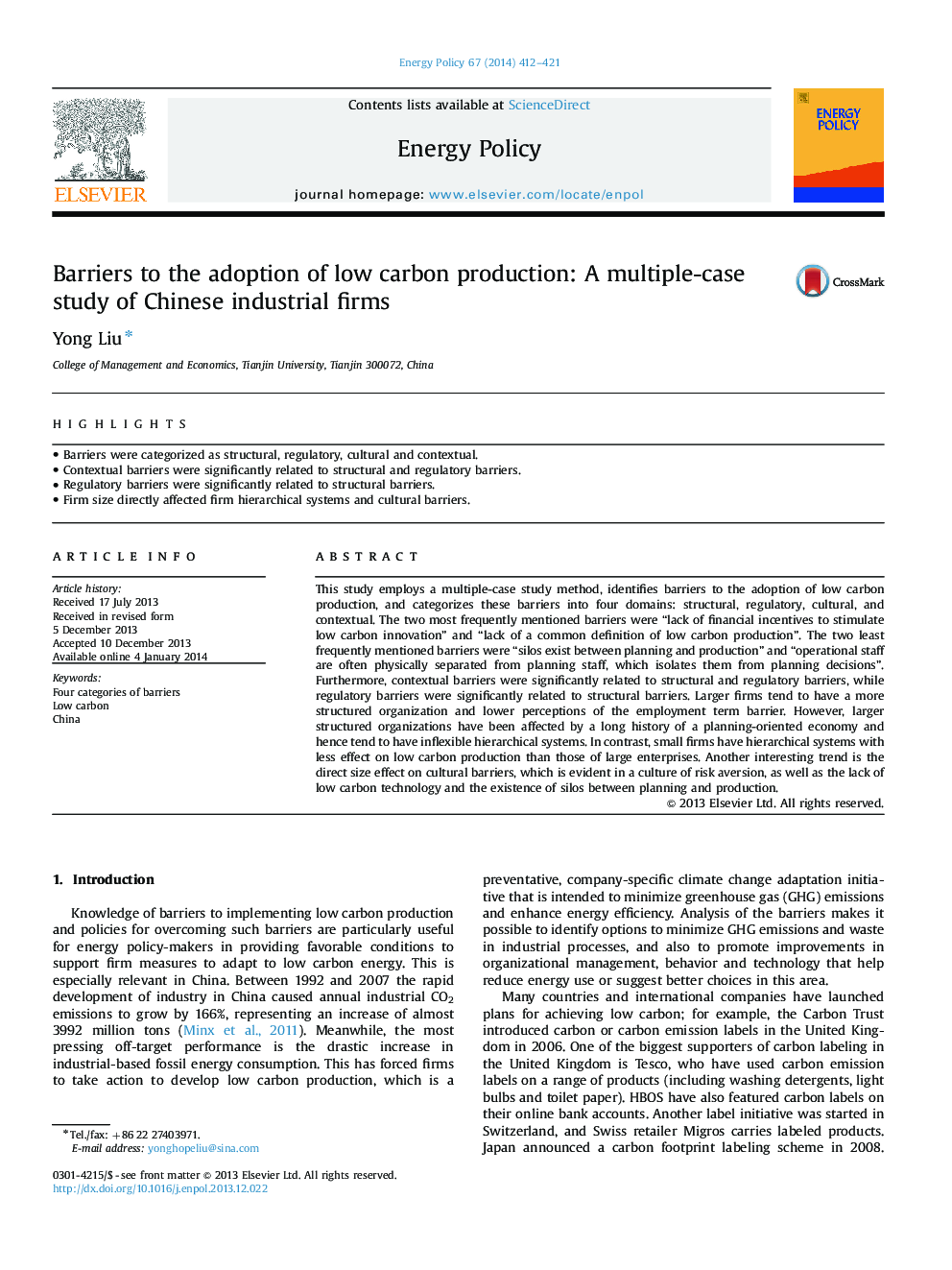| Article ID | Journal | Published Year | Pages | File Type |
|---|---|---|---|---|
| 7402446 | Energy Policy | 2014 | 10 Pages |
Abstract
This study employs a multiple-case study method, identifies barriers to the adoption of low carbon production, and categorizes these barriers into four domains: structural, regulatory, cultural, and contextual. The two most frequently mentioned barriers were “lack of financial incentives to stimulate low carbon innovation” and “lack of a common definition of low carbon production”. The two least frequently mentioned barriers were “silos exist between planning and production” and “operational staff are often physically separated from planning staff, which isolates them from planning decisions”. Furthermore, contextual barriers were significantly related to structural and regulatory barriers, while regulatory barriers were significantly related to structural barriers. Larger firms tend to have a more structured organization and lower perceptions of the employment term barrier. However, larger structured organizations have been affected by a long history of a planning-oriented economy and hence tend to have inflexible hierarchical systems. In contrast, small firms have hierarchical systems with less effect on low carbon production than those of large enterprises. Another interesting trend is the direct size effect on cultural barriers, which is evident in a culture of risk aversion, as well as the lack of low carbon technology and the existence of silos between planning and production.
Keywords
Related Topics
Physical Sciences and Engineering
Energy
Energy Engineering and Power Technology
Authors
Yong Liu,
